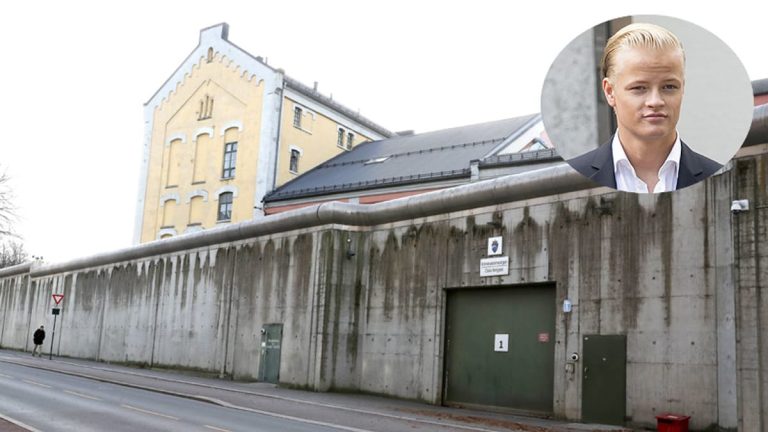Marius Borg (aged 27), the son born to Crown Princess Mette-Mariet while she was still unmarried, must remain in preventive detention until November 27. It must be noted that this is the third time he has been arrested and two new charges of rape have been added to the previous allegations of domestic violence, threats and failure to comply with a restraining order.
It was on Monday that Marius was again arrested by the police. As of Wednesday, the young man was in Oslo prison. It is a penitentiary center located in Greenland (a neighborhood east of the Nordic country’s capital) with a capacity of 243 men, making it one of the largest prisons in Norway.
A high security building divided into three zones. Section A, which closed its doors in 2017; Category B (Bavaria), where prisoners are in custody and some of them are restricted from receiving visitors or socializing with other prisoners; and Section C (Stiffener’n), where inmates with addiction and drug addiction problems usually go.
The Marius Borg case has another setting: the Oslo District Court, where the princess’s first-born son must appear. This law firm deals with criminal, civil and administrative cases and is located in the Oslo Palace of Justice in the city centre. The building was inaugurated in 1994 and was constructed from transparent materials as a metaphor for the democratic values of the rule of law.
Arrests and investigations are handled by the Oslo Police, whose headquarters are also in Greenland. A police station that starts in 2023 and where more than 400 people work, as it includes child welfare, fire brigade, emergency services, passport office, weapons and immigration administration and prevention unit, investigation, intelligence and management.
How is Marius Borg’s daily life in prison?
Norwegian media have not publicly released the name of the prison where Marius Borg is being held Netavisen Nyheter He contacted the Penitentiary Service’s communications director, Paul Espen Humber, who gave more details about what daily life is like for people in preventive detention like Marius.
The size and layout of cells varies from one prison to another, but they all usually have a desk, bed, bed with mattress, television, wardrobe, toilet and sink. As a remand prisoner, Marius Borg can participate in prison activities (such as training courses or educational workshops), but, unlike convicts with a final sentence, he is not obliged to attend if he does not want to.
In the case of Marius Borg, it is decided that he must be sequestered to prevent him from destroying or altering key evidence for the investigation. Because of this, he has not been able to receive visits or letters from family and friends this week. Similarly, the court can ban you from accessing the media (press, television and radio). Of course, you have the right to regular contact with the defense lawyer, as well as the right to receive spiritual help and to chat with a priest along with the medical team.







